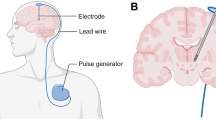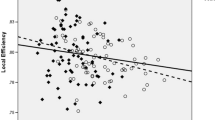Abstract
The purpose of this study was to develop a multi-platform automatic software tool for full processing of fMRI rodent studies. Existing tools require the usage of several different plug-ins, a significant user interaction and/or programming skills. Based on a user-friendly interface, the tool provides statistical parametric brain maps (t and Z) and percentage of signal change for user-provided regions of interest. The tool is coded in MATLAB (MathWorks®) and implemented as a plug-in for SPM (Statistical Parametric Mapping, the Wellcome Trust Centre for Neuroimaging). The automatic pipeline loads default parameters that are appropriate for preclinical studies and processes multiple subjects in batch mode (from images in either Nifti or raw Bruker format). In advanced mode, all processing steps can be selected or deselected and executed independently. Processing parameters and workflow were optimized for rat studies and assessed using 460 male-rat fMRI series on which we tested five smoothing kernel sizes and three different hemodynamic models. A smoothing kernel of FWHM = 1.2 mm (four times the voxel size) yielded the highest t values at the somatosensorial primary cortex, and a boxcar response function provided the lowest residual variance after fitting. fMRat offers the features of a thorough SPM-based analysis combined with the functionality of several SPM extensions in a single automatic pipeline with a user-friendly interface. The code and sample images can be downloaded from https://github.com/HGGM-LIM/fmrat.





Similar content being viewed by others
Abbreviations
- SPM:
-
Statistical Parametric Mapping
- fMRI:
-
Functional magnetic resonance imaging
- FWHM:
-
Full width at half maximum
- BOLD:
-
Blood-oxygen-level-dependent
- GLM:
-
General linear model
- HRF:
-
Hemodynamic response function
- ROI:
-
Region of interest
- GUI:
-
Graphical user interface
- TR:
-
Repetition time
- TE:
-
Echo time
- FOV:
-
Field of view
- (SE-)EPI:
-
(Spin echo) echo planar imaging
- RARE:
-
Rapid acquisition with relaxation enhancement
- S1FL:
-
Primary somatosensorial cortex forelimb region left
- S1FR:
-
Primary somatosensorial cortex forelimb region right
- S1HL:
-
Primary somatosensorial cortex hindlimb region left
- S1HR:
-
Primary somatosensorial cortex hindlimb region right
- SNR:
-
Signal-to-noise ratio
References
Brett M, Anton J, Valabregue R, Poline J (2002) Region of interest analysis using an SPM toolbox. Neuroimage 16(2 Suppl 1):769–1198
Bruker Biospin Paravision 5.0 Users Manual. Bruker AXS GmbH, Germany
Carp J (2012) The secret lives of experiments: methods reporting in the fMRI literature. Neuroimage 63:289–300
Chen BR, Bouchard MB, McCaslin AFH, Burgess SA, Hillman EMC (2011) High-speed vascular dynamics of the hemodynamic response. NeuroImage 54:1021–1030
Cox RW, Ashburner JRW, Breman H, Fissell F, Haselgrove C, Holmes CJ, Lancaster JL, Rex DE, Smith SM, Woodward JB, Strother SC (2004) A (sort of) new image data format standard: Nifti-1. OHBM meeting
Draganski B, Gaser C, Kempermann G, Kuhn HG, Winkler J, Büchel C, May A (2006) Temporal and Spatial Dynamics of Brain Structure Changes during Extensive Learning. The Journal of Neuroscience 26:6314–6317
Friston KJ, Ashburner J, Frith C, Poline JB, Heather JD, Frackowiak RSJ (1995) Spatial registration and normalization of images. Hum Brain Mapp 2:165–189
Friston KJ, Williams S, Howard R, Frackowiak RSJ, Turner R (1996) Movement-related effects in fMRI time-series. Magn Reson Med 35:346–355
Friston KJ, Penny W, Phillips C, Kiebel S, Hinton G, Ashburner J (2002) Classical and bayesian inference in neuroimaging: theory. NeuroImage 16:465–483
Friston KJ, Ashburner J, Kiebel S, Nichols T, Penny W (2007) Statistical parametric mapping: the analysis of functional brain images. Academic Press, Elsevier, London
Gyngell ML, Bock C, Schmitz B, Hoehn-Berlage M, Hossmann KA (1996) Variation of functional MRI signal in response to frequency of somatosensory stimulation in alpha-chloralose anesthetized rats. Magn Reson Med 36:13–15
Hill D, Studholme C, Hawkes D (1994) Voxel similarity measures for automated image registration. Proc Med Imaging 2359:205–216
Hyder F, Behar K, Martin M, Shulman R (1993) Activation of the somatosensory motor cortex in anesthetized rats during forepaw stimulation localized by magnetic resonance imaging. Soc Magn Reson Med 3:379
Hyder F, Behar KL, Martin MA, Blamire AM, Shulman RG (1994) Dynamic magnetic resonance imaging of the rat brain during forepaw stimulation. J Cereb Blood Flow Metab 14:649–655
Johnson GA, Calabrese E, Badea A, Paxinos G, Watson C (2012) A multidimensional magnetic resonance histology atlas of the Wistar rat brain. NeuroImage 62:1848–1856
Logothetis NK (2008) What we can do and what we cannot do with fMRI. Nature 453:869–878
Logothetis NK, Pfeuffer J (2004) On the nature of the BOLD fMRI contrast mechanism. Magn Reson Imaging 22:1517–1531
Martin C, Martindale J, Berwick J, Mayhew J (2006) Investigating neural–hemodynamic coupling and the hemodynamic response function in the awake rat. NeuroImage 32:33–48
Paxinos G, Watson CR, Emson PC (1980) AChE-stained horizontal sections of the rat brain in stereotaxic coordinates. J Neurosci Methods 3:129–149
Sawiak SJ, Wood NI, Williams GB, Morton AJ, Carpenter TA (2009) Voxel-based morphometry in the R6/2 transgenic mouse reveals differences between genotypes not seen with manual 2D morphometry. Neurobiol Dis 33:20–27
Schwarz A, Danckaert A, Reese T, Gozzi A, Paxinos G, Watson C, Merlo-Pich E, Bifone A (2006) A stereotaxic MRI template set for the rat brain with tissue class distribution maps and co-registered anatomical atlas: application to pharmacological MRI. NeuroImage 32:538–550
Silva AC, Koretsky AP (2002) Laminar specificity of functional MRI onset times during somatosensory stimulation in rat. Proc Natl Acad Sci USA 99:15182–15187
Strupp JP (1996) Stimulate: a GUI based fMRI analysis software package. NeuroImage 3:S607
Weber R, Ramos-Cabrer P, Wiedermann D, van Camp N, Hoehn M (2006) A fully noninvasive and robust experimental protocol for longitudinal fMRI studies in the rat. Neuroimage 29:1303–1310
Worsley KJ, Friston KJ (1995) Analysis of fMRI time-series revisited-again. NeuroImage 2:173–181
Zong X, Lee J, John Poplawsky A, Kim S-G, Ye JC (2014) Compressed sensing fMRI using gradient-recalled echo and EPI sequences. NeuroImage 92:312–321
Acknowledgments
This work was funded in part by grants from Ministerio de Economía y Competitividad (PI10/02986) and Red Cardiovascular (RD12/0042/0057). The authors would like to thank Alexandra de Francisco López and Yolanda Sierra Palomares for their excellent work in animal preparation and handling.
Authors’ contributions
C.C. implemented the tool, performed the experiments for the evaluation, analyzed the datasets and wrote the manuscript; V.G.V. and Y.A.G. helped with the implementation regarding SPM package; P.M. helped with the MRI data acquisition; J.P. collaborated in the software engineering; and M.D. collaborated in the design, coordinated all the workflow and helped to draft, write and review the manuscript. All authors read and approved the final manuscript.
Author information
Authors and Affiliations
Corresponding author
Ethics declarations
Competing interests
The authors have declared that they have no competing interests.
Statement of ethical approval
Animals were handled according to the European Communities Council Directive (2010/63/UE) and national regulations (RD 53/2013) and with the approval of the Animal Experimentation Ethics Committee of Hospital General Universitario Gregorio Marañón.
Rights and permissions
About this article
Cite this article
Chavarrías, C., García-Vázquez, V., Alemán-Gómez, Y. et al. fMRat: an extension of SPM for a fully automatic analysis of rodent brain functional magnetic resonance series. Med Biol Eng Comput 54, 743–752 (2016). https://doi.org/10.1007/s11517-015-1365-9
Received:
Accepted:
Published:
Issue Date:
DOI: https://doi.org/10.1007/s11517-015-1365-9




